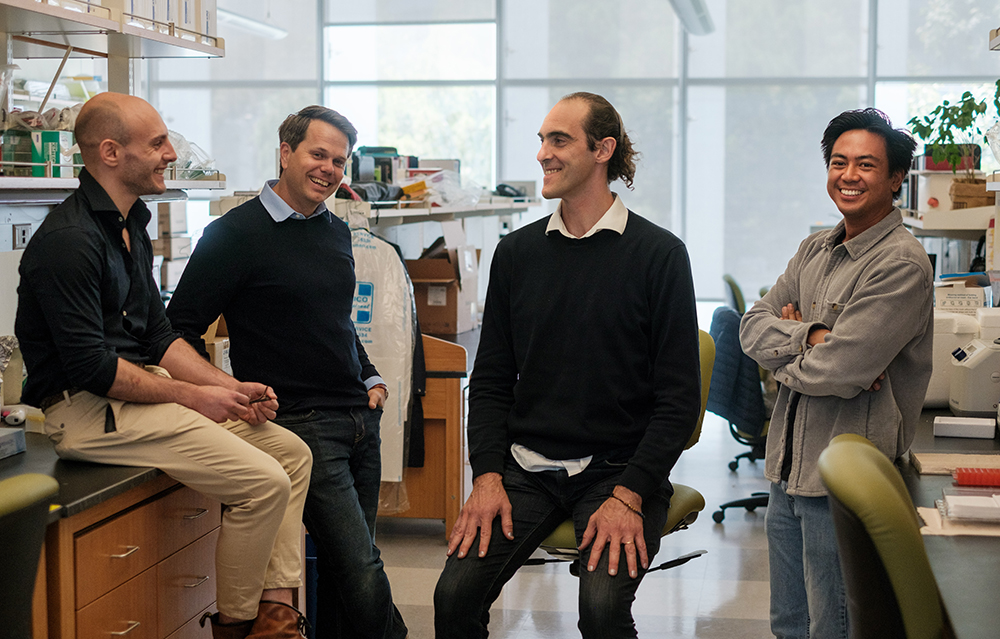
To help patients in need of transplants, artificial kidneys would have to function like their natural counterparts, but they wouldn’t necessarily have to look like them. With a new $1 million prize from the Kidney Innovation Accelerator, or KidneyX, a team of USC Stem Cell scientists led by Nils Lindström in collaboration with Leonardo Morsut are on a quest to build a kidney that resembles the real thing in function, but not in form.
“Nature has taught us that kidneys can come in an astounding diversity of forms,” said Lindström, who is the principal investigator for the grant and an assistant professor of stem cell biology and regenerative medicine at the Keck School of Medicine of USC. “Whereas humans have two big kidneys, one of our largest mammalian cousins, the whale, has numerous kidneys working together and resembling a bunch of grapes. We aspire to follow a similar design in building an artificial kidney using human stem cells.”
With the ultimate goal of providing functional artificial organs for the more than 100,000 patients awaiting kidney transplants, Lindström and his incoming PhD student Connor Fausto teamed up with Morsut and his postdoctoral trainee Fokion Glykofrydis.
To this collaboration, the Lindström lab members will contribute a detailed understanding of how the human kidney develops before birth. Following these fundamental developmental principles, they’ve already succeeded in using stem cells to generate and assemble up to 500 artificial kidney filtering tubes, called nephrons, into pea-size discs called organoids. And even though the scientists cannot yet assemble one million nephrons, which is the number found in a single adult human kidney, whale anatomy demonstrates that lots of little kidneys can work equally well as two big ones.
“Just one thousand of these kidney organoids would contain 400,000 nephrons and amount to approximately half the number of nephrons found in each of your kidneys,” said Lindström.
However, for these organoids to functionally compensate for a failing human kidney, they need to connect them to the blood supply as well as to a urine drainage system. This is because nephrons function to filter the blood, reabsorb needed nutrients and fluids, and excrete unneeded ones into the bladder as urine.
This is where the Morsut lab members bring in their expertise in synthetic biology, a field dedicated to redesigning biological systems. The Morsut lab has engineered genetic circuits that can instruct human cells to assemble into specific patterns and shapes, such as the tube-like structures needed to connect the kidney organoids to blood input and urine output.
“When growing kidney organoids in a lab, they need a little extra coaxing to develop all of the necessary functional components such as the drainage system for collecting urine,” said Morsut, a co-investigator on the grant and an assistant professor of stem cell biology and regenerative medicine, and biomedical engineering at USC. “Our engineered genetic circuits give them this extra nudge, and allow us to control their architecture with a precision that we can’t achieve in a lab environment if we rely solely on stem cells’ natural ability to self-organize.”
This unorthodox approach is precisely the type of research that KidneyX is designed to support. As a public-private partnership between the US Department of Health and Human Services (HSS) and the American Society of Nephrology, KidneyX aims to accelerate innovation in the prevention, diagnosis, and treatment of kidney diseases.
“What KidneyX has recognized is that we need to think better, think bold, and think big to build artificial kidneys that are wearable or implantable,” said Lindström. “We hope our collaboration can transform our thinking about how artificial kidneys can be built and drained through synthetic cellular systems, and ultimately provide better therapeutic alternatives for patients with end-stage kidney disease.”
